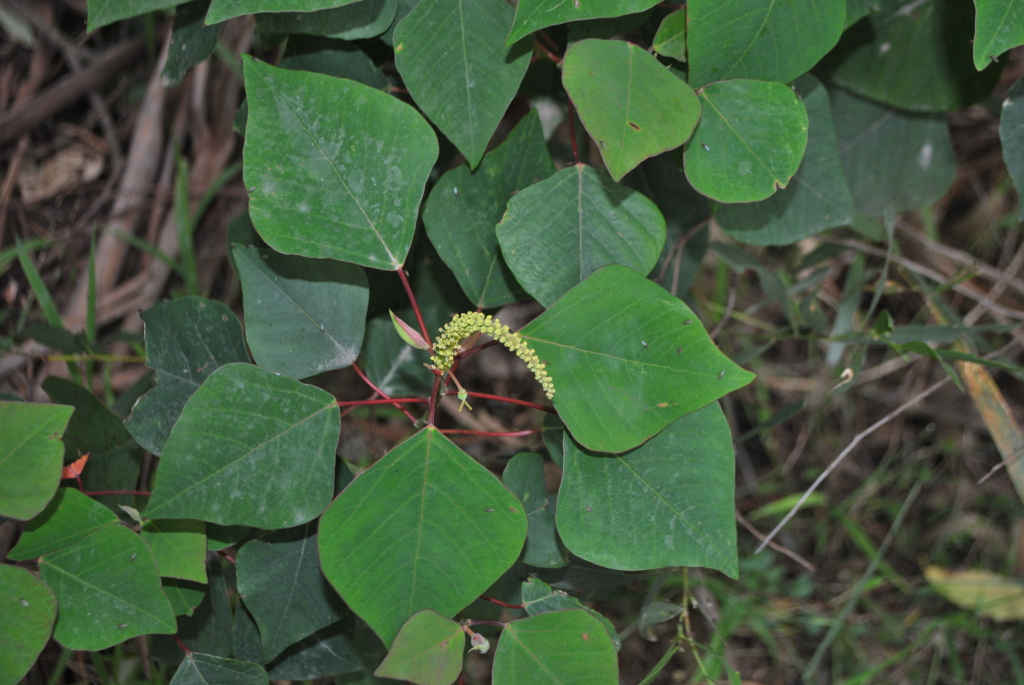Homalanthus populifolius
Graham Native Bleeding HeartShrub or tree to 12 m high. Leaves with lamina orbiculate to ovate, 3–15(–20) cm long, 2.5–12 cm wide, base truncate or obtuse, apex acute to acuminate, surfaces glabrous, lower surface whitish or greyish with 0–2 minute glands, upper surface at the junction of lamina base and petiole with an undivided, disc-shaped, prominent gland, 0.75–1 mm diam.; petiole 1.5–12 cm long, glandless; stipules 10–20 mm long. Inflorescence 4–9 cm long; bracts usually with 1–3 pairs of sessile glands, each gland 0.25(–0.6) mm long, pillow-shaped and uniformly glaucous-papillate. Male flowers 1(–3) per bract; sepals 2; stamens 6–8. Ovary 2-celled, papillate or glabrous. Stigma undivided with a minute apical gland c. 0.4 mm long or rarely glandless. Fruit 5–8 mm long, 8–10 mm wide, smooth; seeds partly covered by caruncle. Flowers Jul.–Jan.
GipP, EGL, HSF. In Victoria it has become sparingly established near roadsides in high rainfall, tall forest communities in the Dandenong and Upper Yarra Ranges, in disturbed sites in Melbourne’s eastern suburbs (e.g. Nunawading and Heathmont), and edge of disturbed bushland at Mallacoota. Native to secondary or disturbed rainforests of Papua New Guinea, the Solomon Islands and eastern Australia extending south to southern New South Wales near the Victorian border but not extending naturally into Victoria.
 Spinning
Spinning



